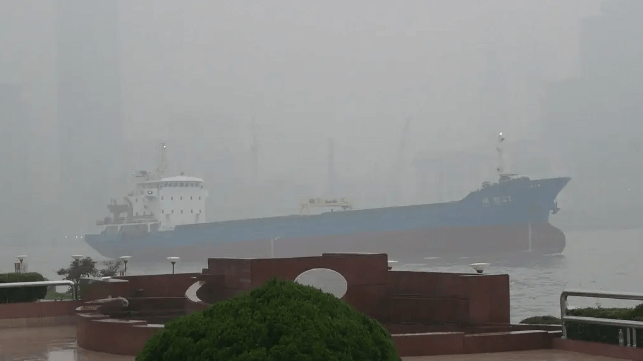China’s Net-Zero Ambitions for Domestic Shipping Need Tough Policies

China is facing the risk of failing to attain carbon neutrality in the domestic shipping industry by 2060 unless the government implements stringent and mandatory regulations on fuel efficiency and low carbon fuels, a new study shows.
The International Council on Clean Transportation (ICCT) study reckons the world’s biggest shipping nation must enact and enforce low-carbon fuel regulations in the course of this decade in order to achieve net-zero emissions in its domestic shipping industry, which is among the largest polluters in its transport sector.
Despite Chinese President Xi Jinping pledging that China would commit to a strong emissions reduction target based on peak emissions before 2030 and striving to reach carbon neutrality before 2060, the country is set to miss the targets unless more stringent policies are adopted.
ICCT, which takes a first look at China’s domestic coastal shipping sector and provides recommendations for actionable long-term decarbonization pathways, contends that with mandatory energy efficiency standards and low-carbon fuel regulations, CO2 emissions could peak by 2040 and fall significantly by 2060.
In essence, with mandatory energy efficiency standards tightened every five years between 2025 and 2045 for newbuild ships, and with low-carbon fuel regulations slowly phasing in from 2030, CO2 emissions could peak by 2040 and decrease by 56 percent in 2060 relative to the 2019 baseline.
However, with more stringent mandatory energy efficiency standards implemented between 2025 and 2045, and with low-carbon fuel regulations phasing in five years earlier (beginning in 2025), CO2 emissions could peak by 2035 and decrease by 83 percent in 2060 relative to the 2019 baseline.
In 2019, China’s coastal shipping sector emitted about 45 million tonnes of CO2, or roughly 4.5 percent of total CO2 emissions from China’s transportation sector. With no additional policies, CO2 emissions from China’s domestic coastal shipping would more than triple to more than 162 million tonnes in 2060.
The study shows that by applying mandatory energy efficiency and low-carbon fuel regulations, CO2 emissions would be 56 percent and 83 percent lower than the 2019 baseline in 2060 under 2°C-aligned and 1.5°C-aligned scenarios. For both scenarios, the fleetwide CO2 emissions could peak before 2040.
“It is essential that low-carbon fuel regulations be implemented no later than 2030. If delayed until 2046, after expiration of mandatory energy efficiency standards, the required rate of fuel carbon intensity reduction would be dauntingly high for the industry,” says the study.
It adds that current policies are unlikely to lead to meaningful decarbonization of China’s shipping sector any time soon, although the country’s carbon peaking and neutralization ambitions could spur the adoption of additional policies to help with the transition.
The Chinese government has made its commitment on carbon peaking and neutrality and is developing a 2030 carbon peaking roadmap. However, the domestic shipping industry has been slow to adopt mandatory measures to control its climate footprint compared with other transportation modes.
In 2018, China had a total of 1,832 dry bulk carriers with a total deadweight capacity of 62.5 million metric tonnes in its coastwise trades. The country also has 1,296 domestic oil tankers with a total capacity of 1.02 million deadweight working in domestic coastal trading.
According to the study, delaying low-carbon fuel regulations until 2046 - after the expiry of the mandatory energy efficiency standards - means delaying CO2 emission peaking by 15 years.
In the 2°C-delayed scenario, the industry would need to cut the carbon intensity of shipping fuel by 71 percent cumulatively for 15 years relative to the 2019 baseline. For the 1.5°C-delayed scenario, industry would have to cut the carbon intensity of shipping fuel by 88 percent cumulatively over 15 years relative to the 2019 baseline.
“These are dauntingly high reductions that would pose a major challenge to industry,” notes the study.
It adds that in developing carbon neutrality policies, China needs to gain a clear understanding of the shipping sector’s current activities, energy consumption and efficiency performance.
